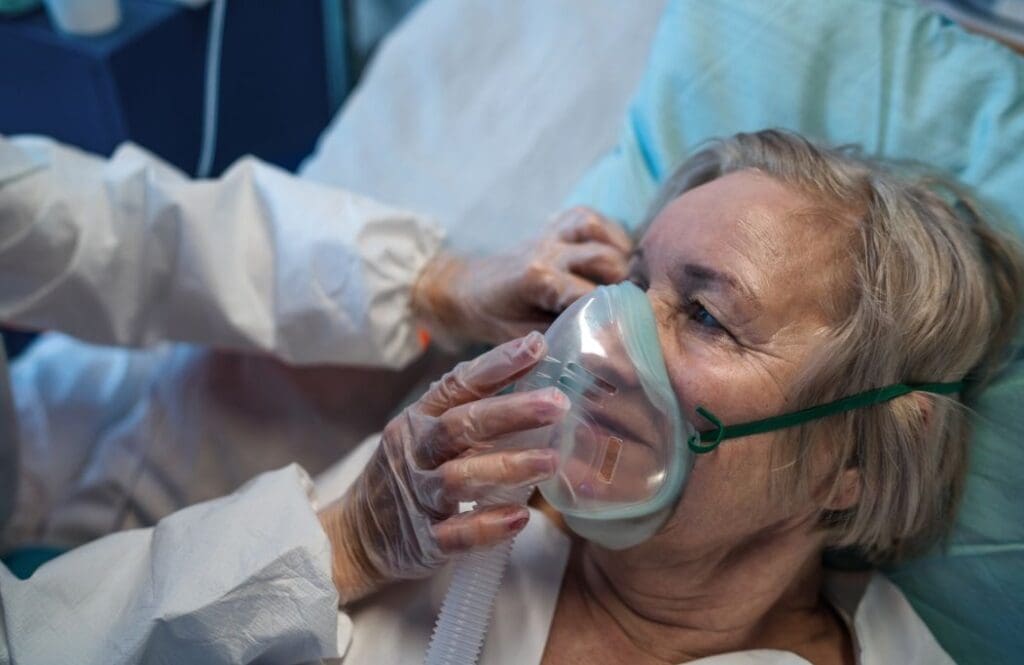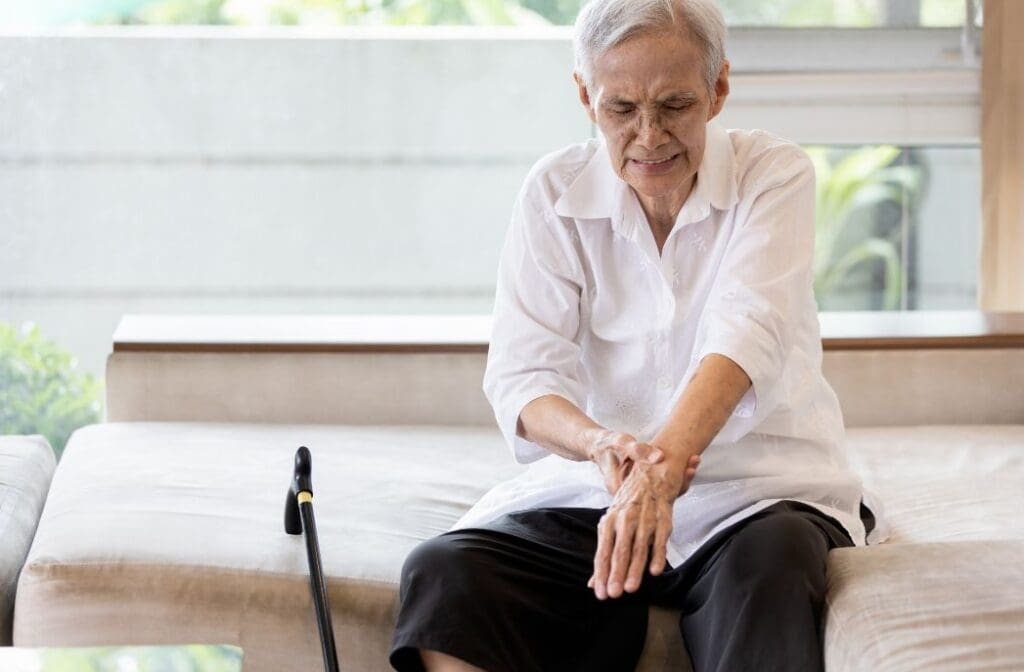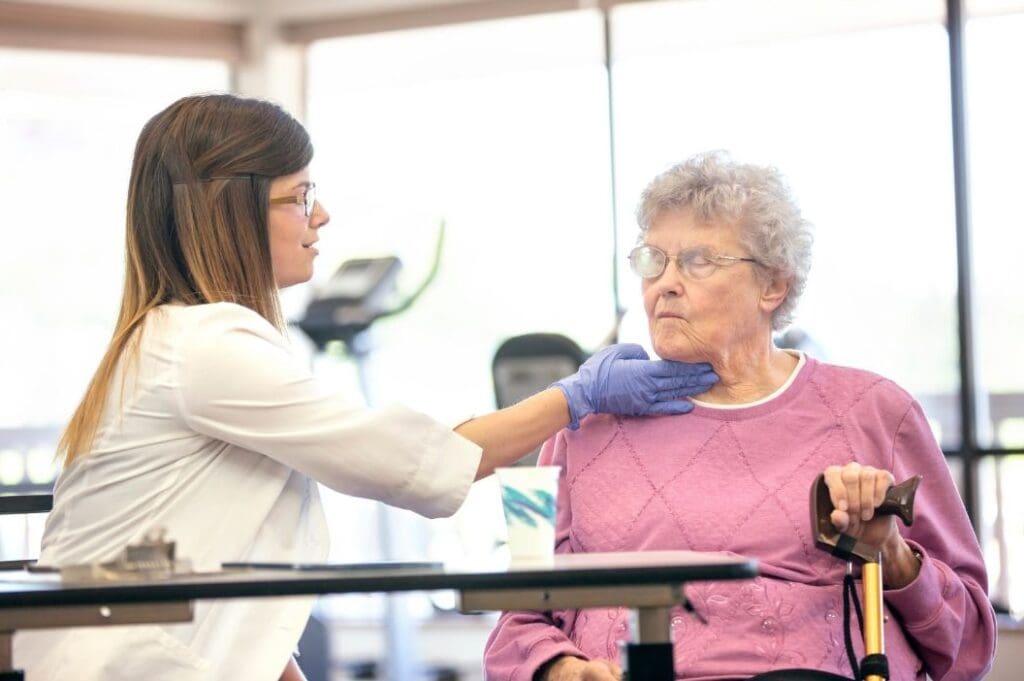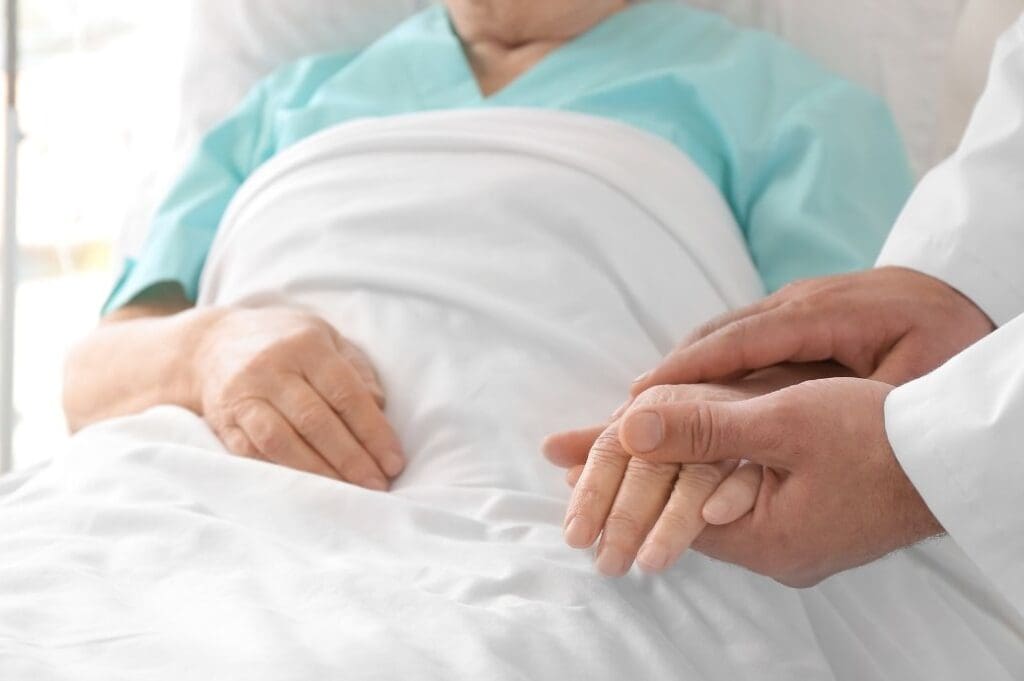A stroke, often caused by a clot or a burst blood vessel, is an unexpected interruption in the brain’s blood supply that causes brain cells to die, leading to injury or disability. Stroke seizures can even lead to death.
Many stroke victims wonder what the life expectancy is after a mini-stroke. Well, a mini-stroke, also known as a transient ischemic attack (TIA), can increase the risk of death significantly; however, many people go on to lead long and fulfilling lives after a stroke, mainly due to receiving the right medical attention and treatment.
Stroke survivors may experience symptoms that include drooping on one side of the face, weakness of the arms, and slurred speech, which can affect daily living, necessitating appropriate care.
Nursing care for stroke patients at home can be given at any stage to improve an individual’s quality of life, particularly if their prognosis becomes terminal. But what are the signs death is near for an individual who has suffered a stroke?
Discover what to look out for to recognise the signs and ensure appropriate care.
1. Irregular Breathing

The severity and location of the stroke can result in various respiratory issues.
Individuals may exhibit symptoms such as shortness of breath, laboured breathing, or, in extreme cases, respiratory failure.
Recognising these signs is crucial, as prompt intervention can significantly influence outcomes and enhance the quality of care provided.
2. Blood and Heart Issues
Individuals who have experienced a stroke are more susceptible to heart attacks.
The vascular damage incurred during a stroke exacerbates the compromised blood flow, creating an environment ripe for additional cardiovascular challenges.
Potential heart issues underscores the need for vigilant monitoring and comprehensive care, which live-in carers can provide, as individuals navigate the delicate phase towards the end of their lives.
3. Trouble Speaking

While difficulty speaking in stroke victims may not be a direct sign of imminent death, it does emphasise the importance of providing appropriate care to ensure an optimum quality of life.
The challenges in speech often arise from the brain damage incurred during a stroke, disrupting the normal flow of blood and affecting language processing.
Conditions such as aphasia, characterised by difficulties understanding or forming sentences, can manifest in various forms like Broca’s or Wernicke’s aphasia.
Additionally, motor speech disorders like dysarthria and apraxia of speech contribute to speech challenges.
The path to recovery involves tailored speech therapy and rehabilitation addressing individual needs and the extent of brain damage. Carers play a crucial role in this process by fostering a patient and supportive environment, allowing time for expression. They can use visual aids and communication strategies recommended by speech therapists, assist with prescribed speech therapy exercises, and practise active listening.
The ability to provide specialised support is just one of many benefits that a live-in carer can give a stroke patient.
4. Restlessness
Stroke survivors often contend with discomfort or pain, which, if left unattended, can lead to restlessness.
Emotionally, coping with the aftermath of a stroke can pose significant challenges, potentially giving rise to feelings of anxiety, depression, or frustration that may contribute to restlessness.
The stroke itself induces neurological changes that can impact the brain, potentially causing restlessness through altered sensory perceptions or cognitive functions.
Moreover, environmental factors such as unfamiliar surroundings, noise, or disruptions in routine can further contribute to restlessness.
A live-in carer can help alleviate restlessness, providing emotional support and creating a comfortable environment to adapt to an individual’s needs.
5. Extreme Weakness

Following a stroke, individuals often face challenges in performing daily tasks due to weakness, prompting the need for increased assistance with self-care activities.
Simple yet essential activities such as cleaning and cooking may become difficult or impossible for stroke survivors to manage independently. In such cases, the presence of a live-in carer becomes invaluable, providing essential support to alleviate the burden of these tasks.
Maintaining an active lifestyle within the bounds of their physical capabilities is essential to avoid the risk of becoming bedbound.
6. Drowsiness
The risk of becoming bedbound or chairbound is a significant concern for individuals recovering from a stroke, as prolonged immobility can lead to a range of health issues.
Among these concerns is the decreased risk of deep vein thrombosis (DVT), a condition where blood clots may form, particularly in the legs. If a clot dislodges and travels to the lungs, it can potentially block blood flow, leading to severe complications.
Carers can help mitigate this risk by encouraging and assisting individuals to remain mobile. This includes helping them move in and out of bed, navigate stairs, and adapt their home environment for more manageable daily tasks, particularly addressing balance issues common among stroke survivors.
Beyond physical support, palliative carers also keep individuals mentally active by engaging in conversations and games and providing emotional support.
7. Inability to Swallow

Difficulty swallowing, a common consequence of stroke, poses significant challenges that can impact a person’s nutritional intake. This difficulty can lead to malnutrition as individuals struggle to maintain an adequate intake of calories and hydration.
Moreover, difficulty swallowing increases the risk of aspiration pneumonia, a severe condition resulting from inhaling food or liquids into the lungs.
Carers can address these challenges by preparing meals that are easy to chew and swallow, focusing on soft foods and well-cooked vegetables.
Creating a calm and distraction-free environment during meals is essential for helping individuals concentrate on eating, and positioning them upright can aid in swallowing.
Offering more minor, more frequent meals throughout the day is another strategy to reduce the amount of food consumed at one time, promoting better nutritional intake and safer swallowing practices.
8. Changes in Skin Colour
As the end of life approaches, observable changes in the individual’s skin can serve as indicators of the body’s declining systems.
Paleness becomes apparent, reflecting decreased blood flow and oxygenation. Additionally, bluish or greyish discolouration may manifest, particularly in the extremities, signalling poor oxygenation.
Irregular patches of reddish or bluish discolouration on the skin are also possible indicators of changes in circulation.
9. Decreased Awareness

As stroke victims approach the end of life, changes in consciousness and awareness may become apparent, mainly when neurological or systemic complications are present.
These alterations in cognitive states are part of the natural progression in the final stages of life.
In such circumstances, it becomes crucial for carers and healthcare professionals to closely monitor these changes and implement appropriate support and comfort measures.
Palliative care specialists are trained to address the comprehensive needs of individuals at the end of life. By focusing on the physical, emotional, and spiritual aspects of care, palliative carers strive to ensure dignity, comfort, and an enhanced quality of life during this challenging time.
10. Decreased Responsiveness to Pain
In the final stages of life, some individuals may display a decreased responsiveness to pain, a complex phenomenon influenced by factors such as changes in neurological function, medication effects, or the body’s natural response to the progression of illness.
Carers employ various methods to enhance the comfort and quality of life for those nearing the end. This may involve judicious use of medications, carefully considering their impact on pain management.
Now you know the signs that may indicate death is near for a stroke victim and when it is essential to necessitate the right level of care. You should also have a clearer understanding of the type of nursing care available for stroke patients at home.
Live-in carers can alleviate symptoms and stress for individuals who have suffered a stroke as well as provide support to the whole family through the process of death after stroke.
Get in touch with IP Live-in Care to learn more about our live-in care services.